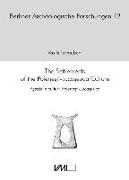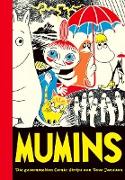- Start
- The Settlements of the Poienesti-Lucaseuca Culture
The Settlements of the Poienesti-Lucaseuca Culture
Angebote / Angebote:
Die Studie präsentiert, basierend auf Publikationen und Archivmaterial, einen Katalog von 205 ausnahmslos unbefestigten Siedlungen der ostkarpatischen Waldsteppe, die in mehreren Clustern meist auf fruchtbarem Boden in Gewässernähe lagen und 1-4 ha umfaßten. Ihre 6-24 m² großen einräumigen Gebäude waren zu zwei Dritteln Grubenhäuser, zu einem Drittel ebenerdig und in 40 Siedlungen mit Feuerstelle oder Ofen versehen. Es gibt Hinweise auf Ackerbau, Tierhaltung, Töpferei, Weberei und Holzbearbeitung. Anhand der Keramik lassen sich drei Siedlungsphasen unterscheiden, I = LT C1b/C2, II = LT D1a/2a mittel und III = LT D2a spät/b mittel. Fundparallelen zeigen Verbindungen zur Jastorf, Przeworsk und Oksywie Kultur im Norden sowie der Geto-Dakischen Kultur im Süden / Westen, was als Zeichen für eine Vermischung zwischen der Kultur der Einwanderer und der lokalen Bevölkerung gedeutet und dem Stamm der Bastarnen zugeschrieben wird, die später mit den Geten gegen Rom kämpften. Unter dem Druck der Daker unter Burebista im 2. V. des 1. Jh. v.Chr. wichen Bevölkerungsteile nach Norden / Nordwesten aus. Der Band schließt mit einem Hinweis auf Forschungsdesiderate.
Based on publications and archive material, this study presents a catalogue of 205 unfortified settlements in the Eastern Carpathian forest steppe which formed several clusters and were usually situated on fertile soils adjacent to water bodies and some 1-4 ha large. Their single-room houses of some 6-24 m² were sunken-featured in two thirds of cases and ground level structures in one third of cases and possessed hearths or ovens in 40 settlements. There is evidence for farming, animal husbandry, pottery, weaving, and wood processing. The pottery allows for the distinction of three settlement phases, I = LT C1b/C2, II = LT D1a/2a middle, and III = LT D2a late/b middle. Parallel finds indicate connections with the Jastorf, Przeworsk, and Oksywie Cultures in the north and the Geto-Dacian Culture in the south / west, which is considered a sign of cultural syncretism between immigrants and local populations and attributed to the tribe of the Bastarnae who later allied with the Getae against Rome. Due to pressure from the Dacians under Burebista in the 2nd quarter of the 1st century B.C. parts of the population moved north / northwest. The volume concludes with a hint at desiderata of research.
Libri-Titel folgt in ca. 2 Arbeitstagen

